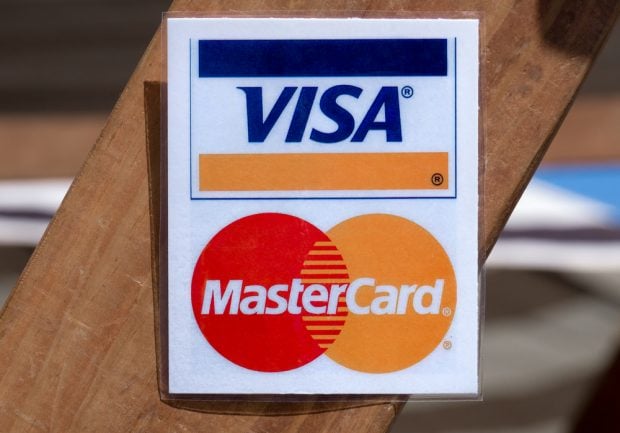 Recent financial regulations havetaken a bite out of traditional payment-related revenue streams forcredit unions, and continuing uncertainty makes it difficult toplan for the future.
Recent financial regulations havetaken a bite out of traditional payment-related revenue streams forcredit unions, and continuing uncertainty makes it difficult toplan for the future.
By now we're all too familiar with the consequences of theDurbin Amendment, a provision tucked into the Dodd-Frank WallStreet Reform and Consumer Protection Act of 2010, which cappedpoint-of-sale debit interchange fees for financial institutionswith more than $10 billion in assets.
|Just when we thought this was all resolved and we could moveforward with at least a basic understanding of the impact of theregulations, a court ruling threw the industry into flux again,questioning the Federal Reserve's rules and re-casting doubt acrossthe industry.
|We've already seen significant reductions in interchangerevenue, even among credit unions which are largely exempt from theinterchange caps. Despite the legislative exemption, market forcesand other provisions of the regulations that empower merchants interms of POS network routing are reducing interchange and,subsequently, a major source of credit union revenue.
|Regardless of the outcome of the challenges to the recent courtruling, we can reasonably expect that there will be furtherdownward pressure on payment-related fee income.
|From a card issuer's standpoint, processing and settlement ofthe standard debit transaction is destined to be a commodityservice, generating essentially the same level of income regardlessof network affiliation, and subject to the low-cost consciousmachinations of empowered retailers.
|What's a credit union to do?
|Clearly we'll need to find more cost effective ways to expandservices and identify new revenue opportunities while continuing toprovide value to our members.
|The good news is that emerging technology services andsolutions, along with expanded use of some of our traditionaldelivery systems, can give your business a competitive boost.
|Today's consumer wants to conduct financial transactionsanytime, anywhere – certainly not just at the branch or just during“regular” business hours. While research shows that youngerconsumers – that elusive target market for many credit unions – areleading the charge toward branch-free, on-the-go transactions, theincreasing sophistication of mobile technology, ATMs and kiosks isfueling the demand for more convenience among all ages anddemographic groups.
|From using a tablet to buy goods, or a phone to exchange money,to banking via surcharge-free ATMs or conducting financial businessby kiosk or on-line banking, credit union members are having a deepdrink of convenience, and they clearly like the taste.
|For credit unions, putting technology and partnerships to workto keep up with these consumer demands is essential.
|While the labyrinth of mobile technology and applied solutionscan be confusing, the growth and growing acceptance of mobilefinancial applications demands our attention. Industry sourcesestimate that Americans now own more than 125 million smartphonesand 50 million tablets. While we're barely at the infancy of themobile commerce revolution, it's a fast-paced environment andconsumers are beginning to demonstrate real receptivity to the useof this technology.
|Credit unions need to keep abreast of developments, gain anunderstanding of the practical uses and costs of fielding thistechnology, and begin examining the landscape to align with trustedpartners who can serve as helpful guides to the rightsolutions.
|While emerging technologies demand our attention, it is criticalthat we continue to use our mature distribution systems to supportour members' ever-present need for account access and service. It'scertainly not news that ATMs have become an essential component ofthe financial services delivery system.
|In fact, credit unions have wisely capitalized on ATM technologyby extending their reach through expanded network participation,and offering enhanced ATM service such as surcharge-free ATM accessand deposit acceptance.
|Credit unions can further maximize ATM revenue, and reducecosts, by leasing new ATM technology from a trusted partner. Smallto mid-size credit unions in particular can use thisoutsource/leasing approach to expand their services, whileeliminating large capital outlays and reducing operating costs byas much as 30%.
|Given the changing and dynamic business environment, and all theuncertainties of regulation and emerging technologies, it isessential that credit unions explore innovative and cost effectiveways to keep up with members' demands for convenience, access andservice. The creative and cost-effective use of technology – bothestablished and emerging – is a key ingredient for continuedsuccess.
|Mansel Guerry ispresident/CEO of CU24 inTallahassee, Fla.
Complete your profile to continue reading and get FREE access to CUTimes.com, part of your ALM digital membership.
Your access to unlimited CUTimes.com content isn’t changing.
Once you are an ALM digital member, you’ll receive:
- Critical CUTimes.com information including comprehensive product and service provider listings via the Marketplace Directory, CU Careers, resources from industry leaders, webcasts, and breaking news, analysis and more with our informative Newsletters.
- Exclusive discounts on ALM and CU Times events.
- Access to other award-winning ALM websites including Law.com and GlobeSt.com.
Already have an account? Sign In
© 2024 ALM Global, LLC, All Rights Reserved. Request academic re-use from www.copyright.com. All other uses, submit a request to [email protected]. For more information visit Asset & Logo Licensing.









